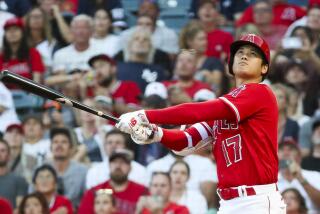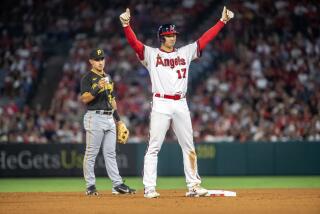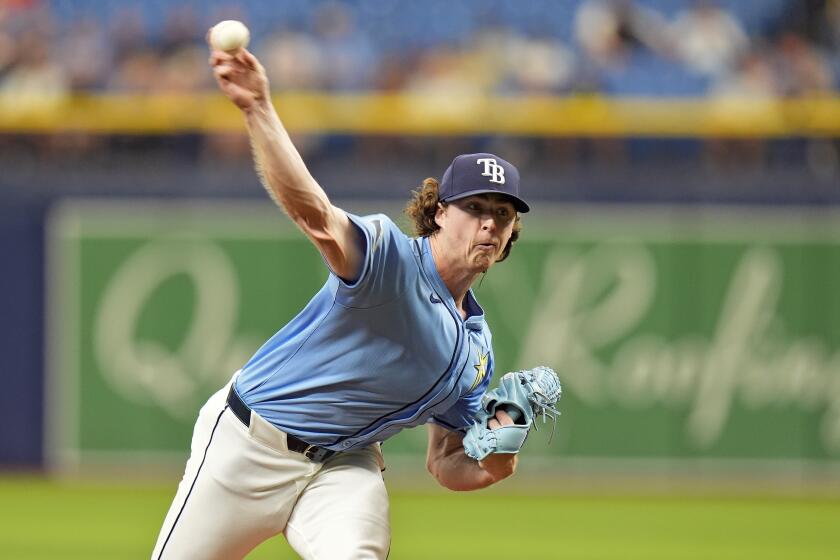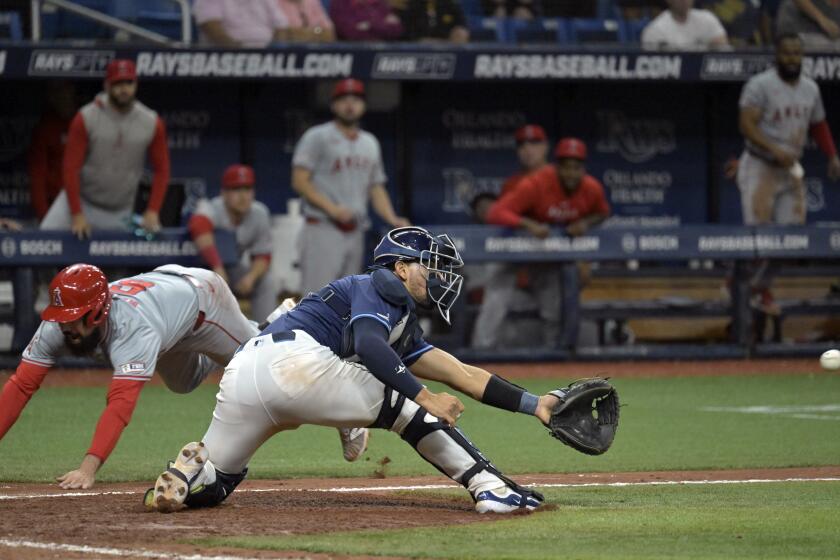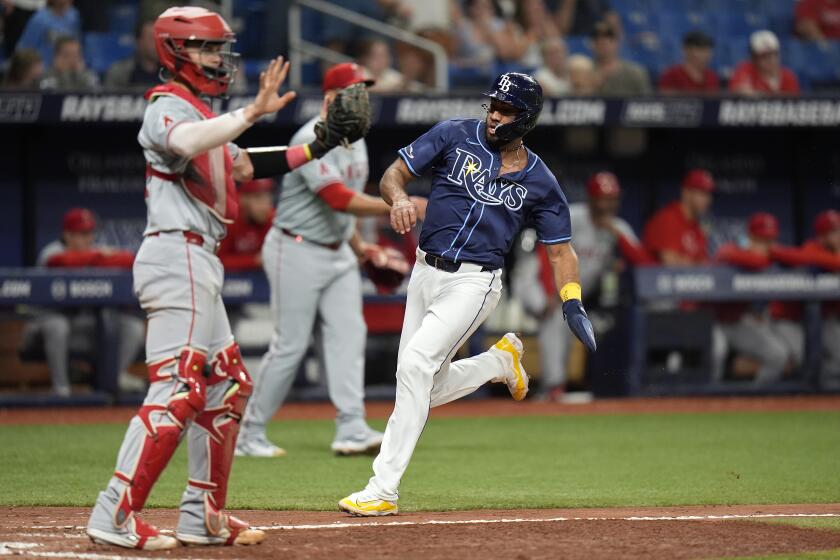New Angel Shohei Ohtani’s elbow injury has not derailed other pitchers
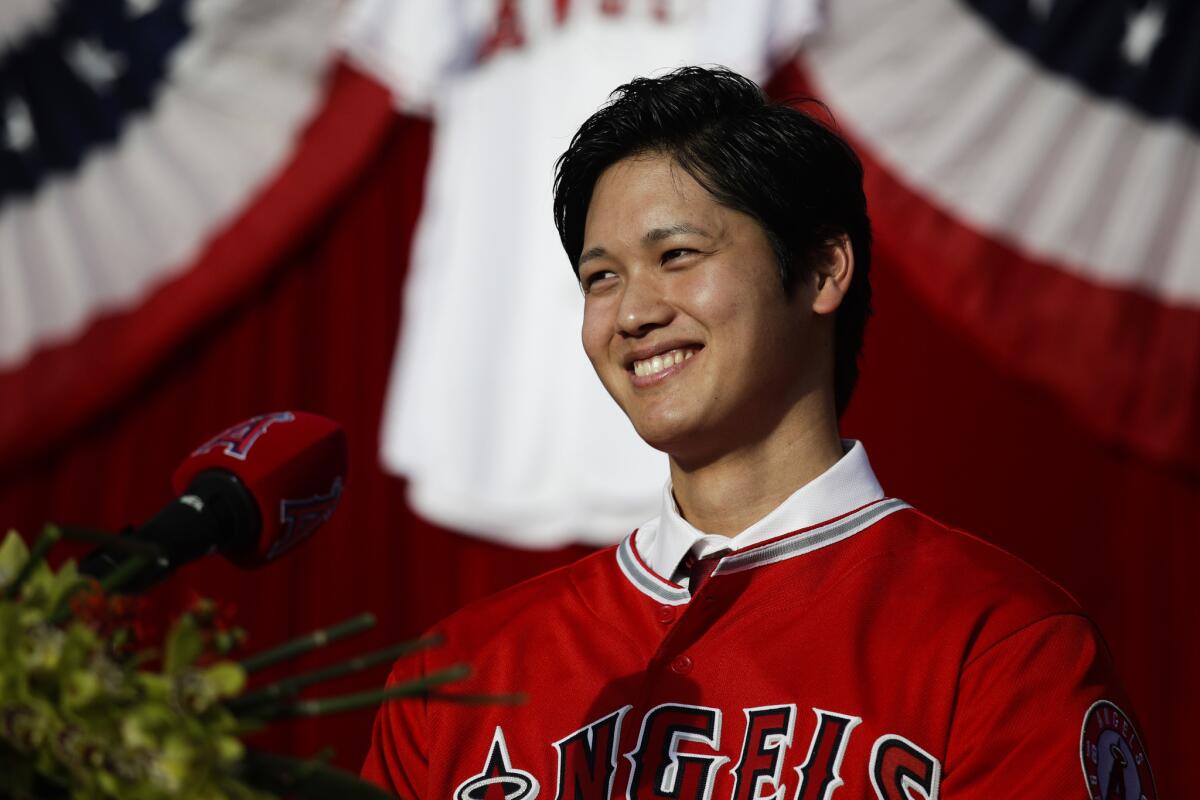
Pitching causes tears within pitchers’ elbows. It always has. Evidence shows that the harder pitchers throw, the more likely significant tears are to develop, and the more likely they are to eventually require surgery to fix those tears. New Angel two-way player Shohei Ohtani throws exceptionally hard when pitching, and Yahoo Sports reported Tuesday that he was diagnosed in October with a first-degree sprain, or a small tear, within the ulnar collateral ligament of his prized right elbow.
News of the tear spurred panic, but the Angels examined his elbow with multiple MRI exams last week and have known about the diagnosis since last month. So have all of the the other clubs who pursued him, in the range of two dozen. That knowledge did not hamper the market for his services, because plenty of pitchers maintain successful careers with similar-sized tears and because even surgery wouldn’t negate his status as a tremendous bargain. The Angels’ $22.3-million commitment to sign him represents a small fraction of his overall value.
An American Journal of Sports Medicine study published in 2016 showed that 100% of pitchers with first-degree sprains and 94% of pitchers with first- or second-degree sprains were able to return to their same level of play without undergoing surgery.
Those pitchers did not receive platelet-rich plasma, or PRP, injections, which Ohtani did after his diagnosis. Angels general manager Billy Eppler indicated it was preventative in nature and no cause for concern.
“It is not out of the ordinary for a player to get PRP at the end of the season,” Eppler said Wednesday, on the third day of the baseball winter meetings.
It has become increasingly common for pitchers to receive the treatment since the turn of the century. Because teams typically do not disclose the treatments for pitchers who are not on the disabled list and because players can choose to undergo it on their own, what percentage do is unclear.
It’s likely much more than is reported. Stem-cell injections are in the same family as PRP shots, and few stem-cell injections on professional players have been publicized. But one physician who performs them, Dr. Steven Yoon, told The Times in April he had performed an estimated 15 to 20.
One example of a preventative PRP injection is Garrett Richards’ October 2016 treatment. Richards was diagnosed with a partially torn ulnar collateral ligament that May, and opted to treat it with a stem-cell injection. Once that healed the tear and he returned to pitching, he received a PRP shot to start his offseason.
Of course, he missed much of 2017 because of nerve irritation in his biceps. But his ulnar collateral ligament is intact, and the Angels expect him to pitch in 2018.
They expect Ohtani to, too. He has been throwing for at least a few days, and the Angels are currently developing a spring-training plan to build up his stamina. A condensed schedule could force them to limit some of their starting pitchers to five spring starts, instead of the traditional six.
Excepting his offensive commitments, Angels manager Mike Scioscia said, he’ll treat Ohtani the same way he does the rest of his starting staff.
“The only understanding we have is it’s really just something that’s behind him,” Scioscia said. “There’s no concern, and there’s no restrictions. He’ll be full go in spring training.”
What the size of that staff will be, Scioscia wouldn’t say. The Angels are contemplating a six-man rotation, and sources said members of the front office began to broach the topic with the team’s starting pitchers Tuesday night. This week, Eppler said he planned to engage the club’s pitchers once he felt his staff had sufficiently examined the “merits” of such a route. He made a moral argument for exploring it, saying the evidence showed it could keep pitchers healthier and thus enable them to elongate their careers.
Eppler has considered those grounds in the past, but Ohtani’s addition accelerated the talk. While more moves will be made, the focus remains on the new sensation. Eppler exchanged texts with Ohtani on Tuesday night, using a translating service to send simple sentences in Japanese.
Follow Pedro Moura on Twitter @pedromoura
More to Read
Go beyond the scoreboard
Get the latest on L.A.'s teams in the daily Sports Report newsletter.
You may occasionally receive promotional content from the Los Angeles Times.
